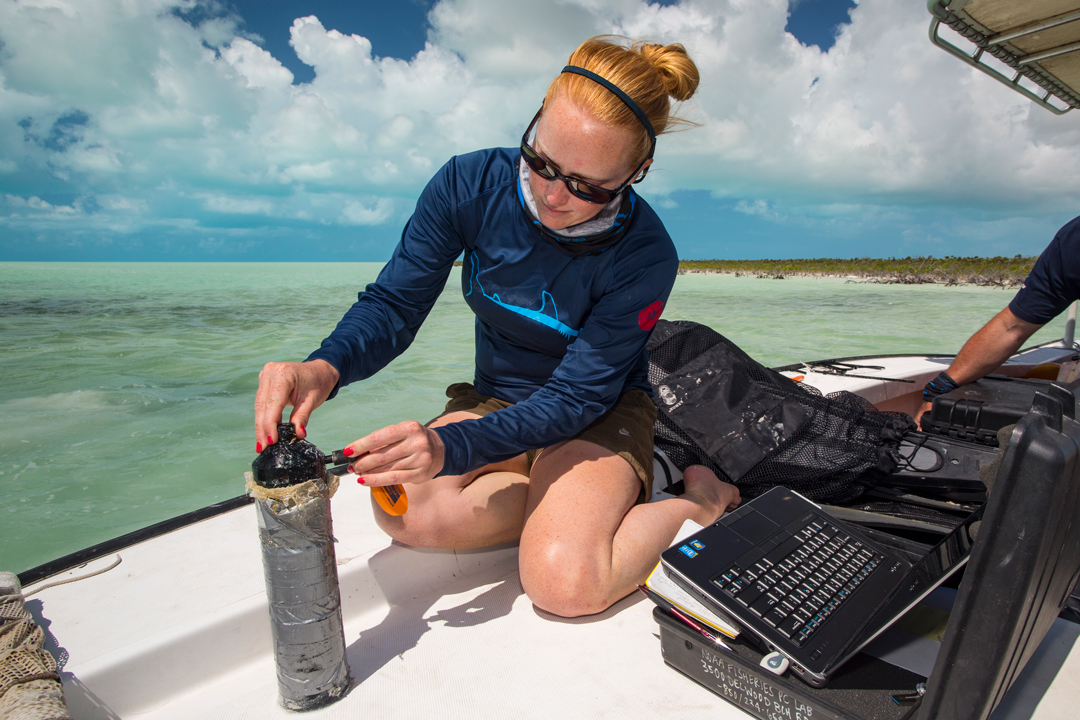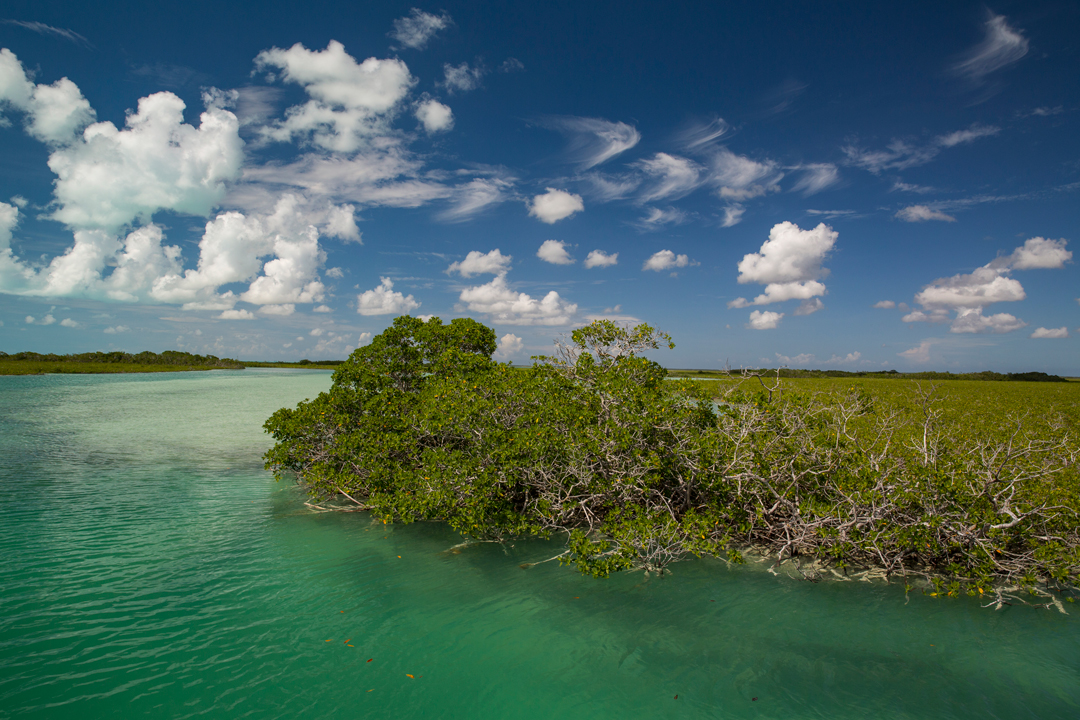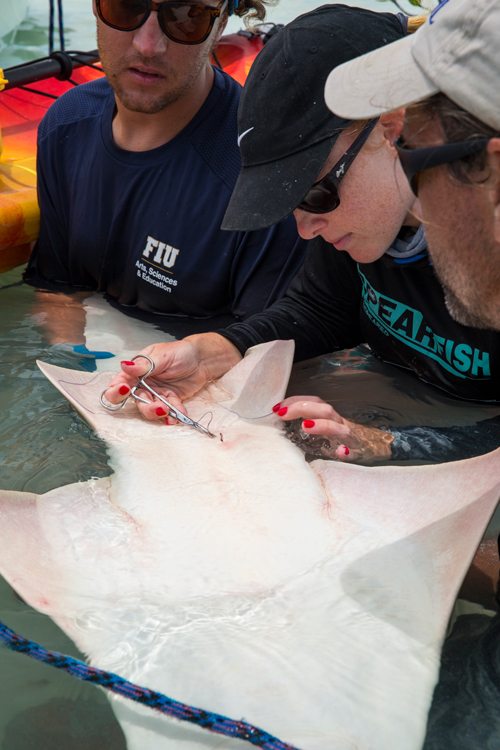There and Back Again: A Sawfish’s Journey
Another exciting piece of the sawfish puzzle is in place after the January 2018 sawfish expedition to Andros, The Bahamas. Despite inclement weather for the entirety of the expedition, our research team led by Dean Grubbs was able to download data from fixed acoustic receivers throughout the north-western side of Andros. Describing habitat use and migration patterns of smalltooth sawfish is one of the main goals of our research and telemetry is an incredibly effective way to remotely collect data needed for effective conservation management and recovery of this endangered species.

Andrea Kroetz downloads data from an acoustic receiver in Andros. Photo by Matthew Potenski | © Save Our Seas Foundation

One of the many tidal creeks in Andros where we both sample and have acoustically detected smalltooth sawfish. Photo by Matt Potensky | Save Our Seas Foundation
Our research team has been implanting passive acoustic coded transmitters in smalltooth sawfish in Andros since March 2016. Over the course of two years, two of our five tagged sawfish have provided us with data that we had only dreamed about. One sawfish is a 4.29-meter female that we recaptured 15 years after her original capture in Bimini, and she was pregnant. We implanted a 10-year acoustic tag and attached a Smart Position or Temperature (SPOT) satellite tag to her in the hopes that we can collect valuable migration data from a mature sawfish. After witnessing her give birth and tagging her, we only collected four days’ worth of data before we lost all connection with her. On May 3, 2017 her satellite tag began reporting again on the edge of the Great Bahama Bank where it joins with the Gulf Stream, approximately 90 kilometers from her last acoustic detection location. This was extremely exciting news since we didn’t have any location on her for nearly six months. In September 2017, we received incredible news from our colleagues at the Bimini Biological Field Station: she had returned to Bimini and was detected on several of their receivers. Even more incredible, she was detected on our Andros receivers in January 2018. She made an approximately 385-kilometer journey in little over a year. This is the first evidence of a mature smalltooth sawfish making long-distance migrations in The Bahamas.

Andrea Kroetz with aid from team members Dean Grubbs and Mark Bond sutures a smalltooth sawfish after implanting a long-term acoustic tag. Photo by Matthew Potenski | © Save Our Seas Foundation
Our first acoustically tagged sawfish in The Bahamas, a 3.61 meter maturing female, has provided us with consistent and nearly constant telemetry data. We hypothesized that non-mature animals are year-long residents of the mangrove backcountry and tidal creeks of the north-western side of Andros. Our most recent data from our fixed acoustic receivers confirmed that this near-mature female has been a year-long resident in Andros for the two years that we have been collecting data on her. This female has likely matured since we tagged her and we cannot wait to see where her journey will take her.

This 4.29 meter mature sawfish has been traveling long distances between the Bahamian Islands of Bimini and Andros. Photo © Andrea Kroetz | NOAA Fisheries
